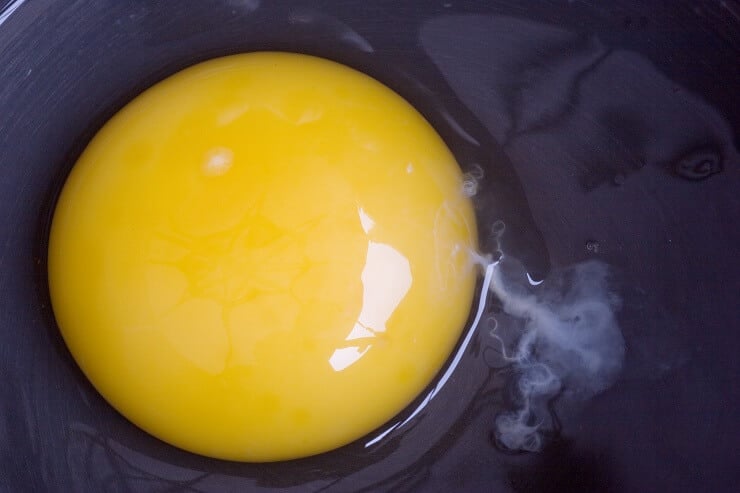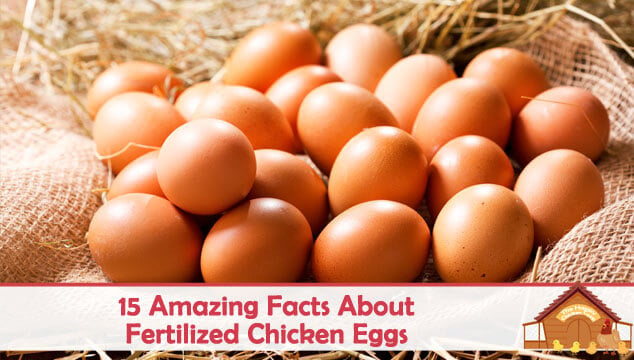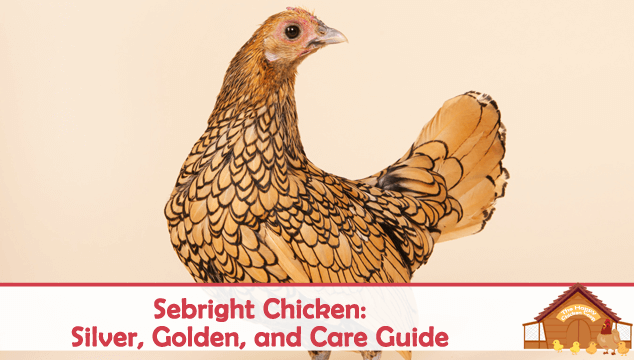Since hatching season will soon be upon us, we thought we would gather together some fascinating facts about fertile eggs.
While you may know everything about fertilized eggs already, it’s always good to have a review once in a while just in case you missed something.
As we go along, we will try and break some long held myths and ‘old wives tales’ about sexing eggs and other tidbits too.
Grab a cup of tea and sit back for an interesting read all about fertilized chicken eggs.
Interesting Facts About Fertilized Chicken Eggs
1. Hens can tell which eggs are healthy.
Possibly because of their ultra violet vision, hens are able to tell which eggs are viable and she will remove all others from the nest.
She uses this ability with her chicks too. If they are poorly she will devote her time to those who are stronger and more likely to survive.

2. A chickens’ egg is a small packaged miracle.
It contains everything a small developing chick needs to grow and thrive over the next few weeks.
An egg contains 7 grams of protein, 5 grams of fat and numerous vitamins, minerals and nutrients to create and sustain life, which it does very ably for around 22-23 days.
The chick will slowly absorb this ‘broth’ over the next 21 days when it will hatch, all being well.
3. Hens talk to their chicks through the shell.
They will trill and coo daily to the eggs especially nearing hatch time when the chicks will talk back!
4. Some people have a fear of breaking open an egg and finding a formed chick on their plate.
If you buy from a supermarket this is next to impossible since the industrial barns in which the hens are raised do not have roosters.
Also, eggs have to be checked by inspectors for defects and flaws. They candle the eggs and anything ‘unsightly’ is discarded.
If you buy locally, the farmer will likely have candled the egg or kept it refrigerated so it won’t develop into a chick, but there is a slight possibility here if he has a rooster.
5. The temperature of a freshly laid egg is 105°F (40.5°C).
Once laid, it cools fairly rapidly. If your hen is setting on these eggs, she will keep the temperature somewhere between 99.5°F and 102°F to ensure development of the chick. She will turn them regularly to ensure equal heating and rotation so that the chick doesn’t ‘stick’ to the membrane. She even plucks her breast feathers so the egg can be next to her skin.
6. How do you know if an egg is fertile?

There are two ways to tell – firstly, you can crack open the egg and look for the ‘bullseye’.
All eggs will have a small pale circle in the yolk – this is the blastodisc (genetic material from the hen). If the egg is fertilized, the roosters’ genetic material will be added to the disc making it a blastoderm. The disc will now take on the appearance of a bullseye.
The second option is to candle the egg – no wasted eggs this way.
It’s unlikely you will be able to see anything before the 3rd day at the earliest.
7. After the rooster has mated with the hen it will take 7-10 days before the eggs will be fertile.
8. You can buy formed chicks in eggs in some grocery markets.
They are called balut and are considered a delicacy in the Far East.
9. Mailing hatching eggs is a risky business.
Once laid, the eggs should be kept at a constant temperature and should not be jostled around. This is why buying hatching eggs that have to be mailed to you, is a risky business.
Although some people have great success, the combination of all that handling and temperature changes can seriously damage the chances of healthy chicks hatching from the eggs.

10. Do you believe in hatching your eggs by the moon?
Some folks do and a table that tells you how can be found in the Farmers’ Almanac every year.Does it work?
I have no idea, but I think I’m going to try it this year, it can’t harm anything and maybe I will get ‘fruitful’ chicks.
11. A hen will produce fertile eggs for up to 21 days after just one mating.
A hen can retain a roosters’ sperm in little pockets inside her egg canal for up to three weeks. Although the fertility of the eggs produced starts to diminish after the 10th day.
12. Chickens don’t need a rooster to lay eggs.
We all know that you don’t need a rooster to have the hen lay eggs, but if you add a rooster to the mix you are likely to get fertile eggs!
A roosters’ whole life revolves around populating the world with his offspring and keeping his girls safe.
13. The yolk is fertilized in the infundibulum before the albumin and shell is added.
14. In the final hours of hatching, the remains of the yolk sac are absorbed into the chicks’ abdomen before it hatches.
In this manner, the chick has enough food stored up to last 24 -36 hours.

15. Some people say that setting the incubator higher or lower will give you more males or females depending on the temperature.
If your incubator is half a degree higher than recommended, you will get more boys but if you set it half a degree lower you will get more girls. If you store your eggs in the fridge at a lower temperature prior to setting, you may get more girls than boys.
Is this an old wives tale? A study done in Australia lends some credibility to the discussion.
4 Myths About Fertilized Chicken Eggs
We have all probably heard variations of one or more of these ‘old wives tales’. We have gathered together a few of the more popular ones to try and put the record straight on them!
1. Some people say that fertilized eggs taste different and will refuse to eat them.
Unless they know about the ‘bullseye’ and see it before the egg is cooked, I’m not sure how they would know.
Anyway, tests have been conducted and there is no scientific proof that they taste any different.
2. You will also find folks who will tell you that a fertilized egg is more nutritious!
Sorry, but fertilized eggs, whether they are brown or white, are nutritionally the same as unfertile eggs.
3. You can sex a chick while it’s still an egg.
Studies have been conducted and should have laid this myth to rest, but someone trots it out occasionally.
The only way to sex a chick is to wait until it is hatched. Even then they can only be sexed if you have sex links, auto-sex, or you are able to vent sex.
4. The shape of the egg will tell you the sex.
Pointy eggs will be male and rounder ones will be girls. I haven’t come across any scientific argument for or against, but the odds are 50/50 that your guess will be right!
Summary
We hope you have enjoyed this article and perhaps you may have learned something new or had a laugh at the myths presented!
Remember, these myths were started possibly hundreds of years ago when science wasn’t in the picture. The fact that these stories persist to this day is a testament to the strength of old beliefs and superstitions that fly in the face of science.
Hopefully, we are a bit more scientific in our approach to things these days, but even cold, hard science fails to capture our wonder at the miracle of the egg.
I hope I never lose the wonder of an egg becoming a chick – miraculous!
Let us know in the comments section below an amazing fact about fertilized chicken eggs…
WANT TO SHARE THIS…





Very generous of you to publish this info, it reminds me of this simple natural wonder and reminds me to care for my hens. I have hatched (not personally) two clutches of neighbour-gifted fertilised eggs, each of ten. Of the first, only one survived, of the most recent six were hatched alive including a magnificent roo who looks after his girls so well and seems to like me too. After giving me one adolescent trial peck, which I probably deserved for being a bit clumsy round his sisters. The latest 6 were born in late April and are prolific layers of nice brown eggs.
Thank you for sharing Peter 🙂
Claire
Just curious, I have two young hens, I older rooster.Shortly after my hens started laying there was a couple of weeks in which there would be one egg per day, and occasionally one soft egg. Now I am getting two eggs per day, one brown , one white.My hens are sex links. originally the eggs were brown.
Interesting chicken myths. My four “first-time” chickens have just started laying. It is winter here in Eastern NC, so I wasn’t expecting them to lay yet.
I can’t have a rooster, so we will have no chicks. Maybe in a year or two we will borrow a rooster.
We recently moved to the country and have around 25 free range Red Jungle Fowl that visit us everyday on and off all day on! We feed and are enjoying them. Some hens are sharing a coop and have been nesting. The first 7 eggs I removed, a hen wasn’t very happy when she returned. We added a fake egg and now two hens are laying eggs. Do I collect them or leave alone. We now have 5 more eggs. A Roo comes to the back door and let’s us know it’s time to eat! Some run when the door opens but others will now wait. So glad I found your site. Thank you for all the info!
Why chickens? Well, I think we need a break from natural disasters, and chickens are a good distraction (how can the Chicken Dance not amuse?).
Very interesting
How does chicken fertilised a egg